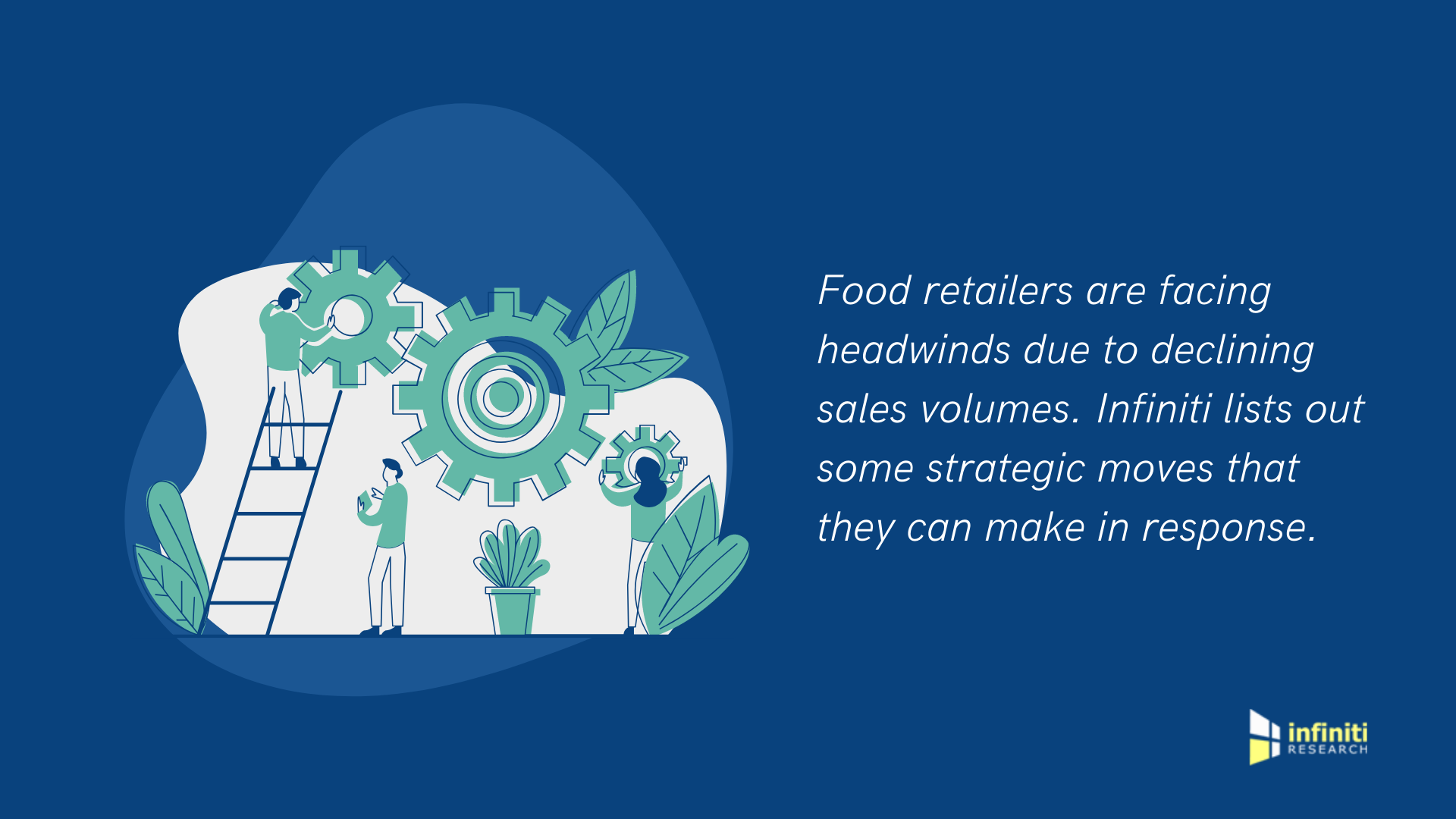Food retailers saw a steady increase in the product volumes sold during the late 90s’ and the early 2000s’, but the growth of food-at-home (FAH) segments has been stalled over the past decade. One of the main reasons for this is when the US customers faced the heat of the recession in 2008, the common trend among households became to eat out less and save money.
As a result, the volumes sold by food retailers in the FAH category saw a steady rise. However, as the economy improved, consumers began dining out frequently, consequently, volumes of products sold by companies in the food retail sector took a hit. Although food industry experts at Infiniti Research predict that the sector will continue to undergo the pressure of declining sales over the next few years, there are a few measures to help food retailers resign from flat or negative growth.

By having a clear understanding of the changes and transformations that have driven food-volume growth in the recent past and how those trends will likely evolve, consumer food companies can better prepare for the road ahead. Request a free proposal to know how our food industry experts can help you stay in line with the market changes in the sector.
Ways to spur growth in food retail
Amidst the downbeat forecast relating to the growth patterns, several food retailers have already begun taking an ad-hoc approach for addressing the sluggish FAH growth on the overall business. Measures such as minor product innovations and or reduction in packaging size are some common examples. But to make way for sustainable growth and plan for the challenging years awaiting them, food retailers must take a broader and long-term view of the market. This can be done through bold strategic moves including collaborations or even partnerships.
Re-evaluate product portfolios
There is no doubt that there has been an overall decline in FAH volumes. Despite this, some subcategories have managed to show signs of growth in recent years. This has been largely driven by the demographic shifts that have taken place in the US over the span of the last 10-15 years. It is vital for food retailers to identify pockets of growth by combining data related to changing consumer attitudes and purchasing behavior with the data collected on the changing demographic and economic trends. Furthermore, the lifestyle changes of US consumers are promoting the growth of healthy and organic food products. Therefore, food retailers can concentrate their efforts on these verticals to ensure stable profits. Identifying underperformers is another area of focus for companies in the food retail sector. Divesting in product categories that are rapidly declining in terms of volumes and profits would be advisable.
Is your business experiencing a slump in sales? It can be revived and brought back to track with the right market intelligence solutions to guide your decision-making process. h with an expert for more insights on how our tailor-made solutions can cater to your specific business challenges.
Supply chain changes to manage volatility
Food retailers often find themselves exposed to commodity price fluctuations and aggressive supply chain transformations are the only solution to overcome such challenges. For instance, a popular coffee chain had purchased its first coffee farm in 2013 to ensure an undisputed supply of coffee beans. Food retailers can also consider joint ventures which will help increase their collective bargaining power and respond better to commodity volatility. Some top food retailers are also trying to develop new and innovative product formulations to better respond to commodity price fluctuations. Such process changes can help to considerably lower costs so that food retail companies can better handle the volatility.
Enter into mutually beneficial partnerships
The challenges faced by both food retailers and food manufacturers over the coming years will be more or less the same. Some of the top retailers are already deeply invested in the private-label and prepared-foods businesses. These categories present opportunities for mutually beneficial partnerships among food companies. Seeking new ways to collaborate with food retailers will be the trait of winning food companies.
Want more insights on our solutions for companies in the food industry? – Request more info.


